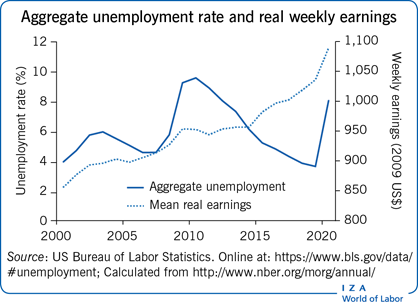
Navigating Opportunities: Labor Market Dynamics in the USA

Dynamic Realities: Unraveling the Complexities of the Labor Market in the USA
Introduction to the Labor Market
The labor market in the USA is a dynamic ecosystem influenced by various factors, including economic trends, technological advancements, and societal shifts. Navigating this complex landscape requires a nuanced understanding of the factors shaping employment opportunities, career paths, and workforce dynamics.
Economic Trends and Employment
Economic trends have a direct impact on the labor market. During periods of economic growth, businesses expand, leading to increased job opportunities. Conversely, economic downturns may result in job losses and a more competitive job market. Understanding these cyclical patterns is crucial for individuals planning their careers and adapting to changing economic conditions.
Technological Advancements and Job Evolution
The relentless pace of technological advancements significantly influences the structure of the labor market. Automation, artificial intelligence, and digitization reshape job roles and create demand for new skills. Job seekers must stay abreast of technological trends and embrace continuous learning to remain competitive in an evolving job landscape.
Remote Work and Flexibility
The concept of work has evolved, especially with the widespread adoption of remote work. The labor market in the USA reflects an increased emphasis on flexibility, with many employers offering remote work options. This shift has implications for both employers and employees, influencing work-life balance, talent attraction, and the geographical dynamics of job opportunities.
Skill Requirements and Education
The labor market places a premium on skills and education. Job seekers need to align their skills with industry demands to enhance employability. Continuous learning and upskilling are essential to meet the evolving requirements of the job market. Education and training programs play a crucial role in preparing individuals for the skills demanded by employers.
Demographic Shifts and Diversity
Demographic shifts, including an aging population and increasing diversity, contribute to changes in the labor market. Companies recognize the value of a diverse workforce and inclusivity. Understanding these demographic dynamics is essential for employers to create inclusive workplaces and for individuals to navigate opportunities in a changing demographic landscape.
Job Market Challenges and Opportunities
While the labor market offers abundant opportunities, it also presents challenges. Job seekers may encounter competition, and certain industries may face talent shortages. Navigating these challenges requires strategic career planning, networking, and a proactive approach to skill development. Identifying emerging opportunities is key to staying ahead in a competitive job market.
Entrepreneurship and Gig Economy
The labor market landscape extends beyond traditional employment. Entrepreneurship and the gig economy provide alternative avenues for individuals to create their own opportunities. Embracing an entrepreneurial mindset and exploring gig work can offer flexibility and autonomy. Understanding the dynamics of these non-traditional work structures is crucial for those seeking alternative career paths.
Impact of Globalization
Globalization has interconnected economies and labor markets worldwide. Companies often source talent globally, and individuals may explore international career opportunities. The ability to navigate global job markets, cultural diversity, and cross-border collaborations becomes increasingly important for those looking to expand their career horizons.
Utilizing Careerth.com for Job Insights
For individuals navigating the intricacies of the labor market in the USA, Careerth.com serves as a valuable resource. The platform offers insights into industry trends, career advice, and job opportunities, empowering individuals to make informed decisions about their careers.
Conclusion: Crafting Personal and Professional Journeys
In conclusion, the labor market in the USA is a dynamic arena shaped by economic, technological, and societal forces. Navigating this landscape requires adaptability, continuous learning, and strategic career planning. By understanding the factors influencing the job market and leveraging available resources, individuals can craft fulfilling and successful personal and professional journeys.
